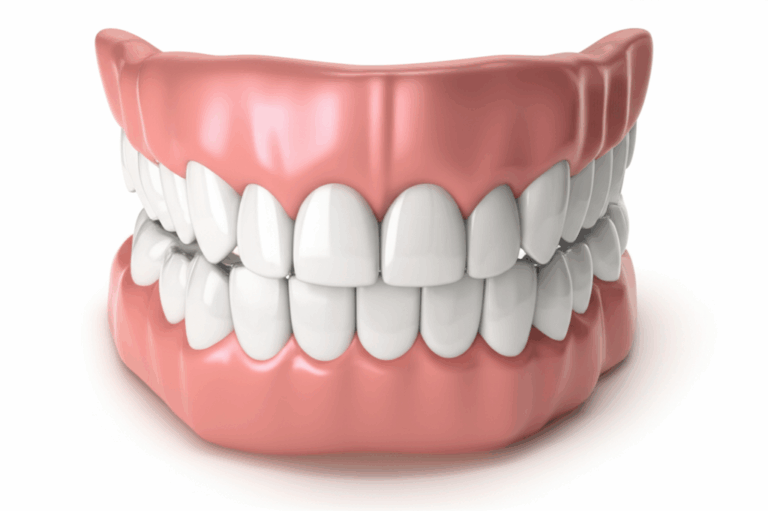
How Much Do Dental Clinics Make? Understanding Profitability in Dentistry
Ever wonder how much a dental clinic really makes? Thinking about owning your own clinic and curious if it’s a good way to earn money? In this post, I’ll show you exactly how dental clinics earn profit, why some do better than others, and what you should know if you want to start a dental clinic—or just want your current one to make more money. We’ll keep things simple, use real numbers, and look at examples from all types of clinics.
Table of Contents
What Is the Average Revenue for a Dental Clinic?
Let’s start at the top. How much money does a normal dental clinic in the United States usually make in a year? According to the American Dental Association, the gross annual revenue for a general practice can be anywhere from $700,000 to $1,200,000 every year. That’s a big difference! Why is there such a big range? It depends on how many dentists work there, how many patients they see, what type of services they offer, and where the clinic is.
Dental clinics that focus on certain things, like braces or oral surgery, usually make more money. But don’t get excited just yet—there’s a big gap between gross revenue (the total money you take in) and net profit (what you actually keep).
| Metric | Average Range (US) |
|---|---|
| Gross Annual Revenue | $700,000 – $1,200,000 |
| Net Profit Margin | 30% – 45% |
| Owner Dentist Compensation | $180,000 – $350,000+ |
| Production per Hour | $300 – $600 |
| Production per Patient Visit | $250 – $450 |
| Overhead Percentage | 50% – 70% of Gross Revenue |
But hold on—just because the money coming in is high doesn’t mean there’s lots left over. Some clinics make a lot but also spend a lot, so not all of it is profit.
What Does “Net Profit” Really Mean for Dentists?
Net profit is the real number that matters. It’s the money left after you pay for everything—staff, supplies, rent, lab costs, and more. If your clinic earns $1 million in a year but spends $700,000, your net profit is $300,000.
Net profit margin shows you what percent of your money is left after all bills. A good dental clinic often has a profit margin around 30% to 45%. Some really well-run ones can even get up to 50% or higher. Net profit is what lets you pay yourself as the owner, grow your clinic, and help you get through slow months.
The point here? You can bring in a lot, but if you pay out a lot too, you might have very little left when the year is over.
Why Are Some Dental Clinics So Much More Profitable?
Here’s the question many clinic owners ask. Why is Dr. Smith down the road making $400,000 a year, while others are just scraping by?
What kind of practice and what services they do matters a lot. Here’s what I’ve learned:
- General dentists see all kinds of patients and do all kinds of treatments. Their profit is usually good, but not the highest.
- Specialists (like orthodontists and oral surgeons) can charge more per patient, so their total money coming in is often higher, and sometimes their profit is too.
- Clinics that do cosmetic services like veneers or implants can make more money, if they market well and control their costs.
Clinic size is big too. Dentists working alone can keep costs down, but bigger clinics with more docs can spread out some of the bills and see more people. Some of the top earners are clinics with several dentists or those run by big companies called Dental Service Organizations (DSOs).
In the end, you can have the fanciest equipment in the world, but if your chairs are empty, you won’t make money. Seeing lots of patients is what keeps a dental clinic alive.
How Do Location and Demographics Affect Dental Clinic Income?
You can’t sell ice to Eskimos, and you can’t fill dentist chairs if nobody in your town needs you! Where your clinic is can make or break your income.
- Big cities have lots of possible patients, but also more competition—and you pay more for things like rent and staff.
- Suburb clinics may get steady families, have OK insurance pay, and aren’t as expensive to run.
- Rural clinics have less competition and rent is cheaper, but you might see fewer people and they may not spend as much per visit.
Who lives nearby also matters. Is your clinic near lots of young families? Or close to older people who might need more dentures or frequent visits? Knowing who lives nearby helps you offer the right services.
Want to see how the smart clinics meet their patients’ needs? Some work with a reliable china dental lab to get quality supplies for their area.
What Are the Biggest Costs for Dental Clinics?
Here’s where your income gets eaten up. The biggest costs usually are:
- Paying your staff: Most clinics spend 22% to 28% of all money on helpers—like hygienists, assistants, or the front desk.
- Facilities: Rent or buying your building can cost 5% to 8%. If you’re in a big city, it’s more.
- Dental supplies and lab work: Not just gloves and toothpaste—crowns, filling materials, and dentures too, especially if you want good quality from a removable denture lab or others.
- Advertising & admin costs: Getting your name out takes money. Most clinics put 3% to 5% here, and up to 12% for admin, insurance, and staff training.
| Cost Category | Average % of Revenue |
|---|---|
| Staff Wages & Benefits | 22% – 28% |
| Rent / Mortgage | 5% – 8% |
| Dental Supplies | 5% – 7% |
| Lab Fees | 7% – 10% |
| Marketing & Advertising | 3% – 5% |
| Admin, Insurance, Continuing Ed. | 8% – 12% |
As you see, the money gets split up quick!
How Does Insurance Shape Profitability?
Insurance is a big deal in dentistry. Should you be “in-network” with insurance (like PPOs) or set your own prices (“fee for service”)?
- PPO (Preferred Provider Organization): Brings in more patients but usually pays less per visit. So you’re busy, but earn less per treatment. Plus, more paperwork!
- Fee-for-Service (FFS): Lets you set your price, but you might see fewer patients since insurance doesn’t cover as much.
If most of your income comes through insurance that pays you less for each procedure, your profit can get squeezed. Great clinics keep an eye on how much of their money comes from each type of patient, and pick the mix that works for them.
Bottom line: Know your numbers and pick the system that fits your goals. A busy clinic might look great but actually make less than you think.
How Can Dental Clinics Grow Their Profits?
If you own a practice (or want to), how can you make more without just working longer hours?
1. Hygiene and regular visits: Your cleaning department brings in steady money and keeps your schedule full. Train your hygienists to notice problems early and keep people coming back.
2. Add better services: Think about offering things like veneers or implants. If you work with a great veneer lab, you can do these jobs well and often for more profit.
3. Get billing right: Don’t leave money on the table. Watch collections and try to get as close to 100% as possible.
4. Train your team: Your staff is your biggest expense. If you teach them well and keep them happy, they’ll do more and stay longer.
5. Watch your spending: Use simple tools, set goals, and check reports often. Going digital with a digital dental lab can help save time and money.
Here’s the real trick: Don’t just try to see as many people as you can. Keep the ones you have happy, offer good value, and cut out waste.
What’s the Future for Dental Clinic Profits?
Will clinics keep making good money? Most likely yes, but things keep changing.
- New tech: Things like AI, 3D printing, and video visits help clinics work faster and offer new stuff. Clinics that try new tech usually do better.
- Changing patients: People want more than just a cleaning—they like white teeth, quick service, and digital reminders. Clinics that offer what patients want get busy.
- The economy: When times are good, people spend more on their teeth. When times are tough, they may wait on care. Smart clinics watch trends and adjust.
To stay profitable, you have to be open to change, learn new things, and find better ways to work.
Case Studies: Real-Life Examples of Dental Clinic Profits
Here are two real-life stories showing how clinics make profit:
Practice A: High-Tech Solo Clinic
Dr. Lin runs a single-doctor practice in the suburbs. She bought the latest dental tech, doesn’t use much insurance, and focuses on patient comfort. Her team works with a trusted dental ceramics lab for great crowns and keeps the schedule packed without waste.
- Gross Revenue: $1,100,000
- Net Profit Margin: 48%
- Key to Success: Loyal patients, good tech, and a happy team. Most new patients come from referrals. She keeps close track of what she spends.
Practice B: Busy Urban Group Practice
This clinic is downtown and has three dentists. They stay busy because they take lots of insurance plans (PPOs). They make a lot, but costs for staff and insurance write-offs bring their profit down.
- Gross Revenue: $2,500,000
- Net Profit Margin: 32%
- Key to Success: Big patient numbers and fast service. But, more staff, more paperwork, and expensive advertising just to stay full.
What can we learn? Bigger clinics don’t always make more for the owners. Being smart about spending and keeping patients loyal is just as important as a packed schedule.
Summary: What Should You Remember About Dental Clinic Earnings?
Here’s what you should know:
- Gross revenue isn’t everything. Profit is what matters.
- Most general clinics earn $700,000 to $1.2 million a year in the US. Specialists can do better.
- Average profit margin is 30%–45%.
- Biggest costs are staff, supplies, lab work, rent, and ads.
- Seeing more patients helps, but only if you control your spending.
- Insurance can help or hurt profits—pick the kind that works for you.
- Regular cleanings, helpful staff, and offering high-value treatments help make more money.
- Modern tech and happy teams give you an advantage.
- Location matters—what works in one place might not in another.
- Be ready to change and try new ideas—the dental world keeps moving.
Still have questions, or need advice on where to find good lab partners and digital solutions? Try reaching out to a respected china dental lab, check out a top removable denture lab, or learn more about veneer lab.
Remember: Whatever you do in dentistry, knowing your numbers helps you win. Watch your spending, care for your patients, and always look for ways to do things better.








